Accommodations: Delta Hotels by Marriott
We left the hotel this morning at 9, which was really nice, since we were able to enjoy a leisurely breakfast before boarding the bus.
Our journey today was to Hopewell Rocks, and to get there, we had to travel over the Confederation Bridge, which links the provence of PEI with the mainland provence of New Brunswick. The bridge opened in 1997 and is the longest bridge in Canada – 8 miles long. I read that it is also the longest bridge over ice-covered waters in the world.
We arrived later than expected at Hopewell Rocks, so we had lunch upon arriving and then our local guide took us to get a closer look at the rocks.
The Rocks as they are called, are rock formations known as sea stacks, caused by tidal erosion. They are located on the shores of the upper part of the Bay of Fundy. There is an extreme tidal range there and twice a day, at low tide, the rocks can be viewed from ground level by walking along the beach. We were fortunate to be there at the right time, with low tide, to be able to see these rocks in all their splendor.
The rocks have unusual shapes and some tower up to 70′ tall. The rise and fall of the tides has eroded the bottom parts of these enormous rocks, giving them their whimsical shapes. Although the tides vary from day to day, the high tide can be as high as 52′, one of the highest tides in the world.
Our guide Paul, first gave an interesting lecture on tides, and then we walked down the 99 steps to what was essentially the ocean floor, since it was low tide, to see these rocks up close. Pretty cool walking on the actual ocean floor!!
If you stay for 6 hours or so, you can watch how the water comes back in after low tide and rises the 52′ to make the rock formations look like islands. And depending on the time of year, you can watch what is called a tidal bore, which is a phenomenon in the Bay of Fundy, where the strong incoming tide forms a crest of water which goes on for quite a long distance. Surfers try to catch this wave and ride it the entire length.
While we walked along the ocean floor, our guide said that if a couple stands under one of the rock formations that is in the shape of an archway, and kiss, the couple will be wedded together for life. Of course, Allan and I did just that, hoping to add to our already wedded 53 years.
There is a rescue station on the beach that people can swim to if they get caught in the rising tide and can’t get back in time. When you call in for help from there, as long as you are not in distress medically, the fire department will rescue you once the tides recede.
It is amazing to comprehend the tons and tons of water that surges in twice a day and it was really a learning experience, as I had not known anything about this place prior to today.
We thanked our guide for his wonderful presentation, and then it was back on the bus to get to our hotel in St John, New Brunswick. We were late arriving because of road construction, but we did meet with friends for a late dinner and then it was off to bed.
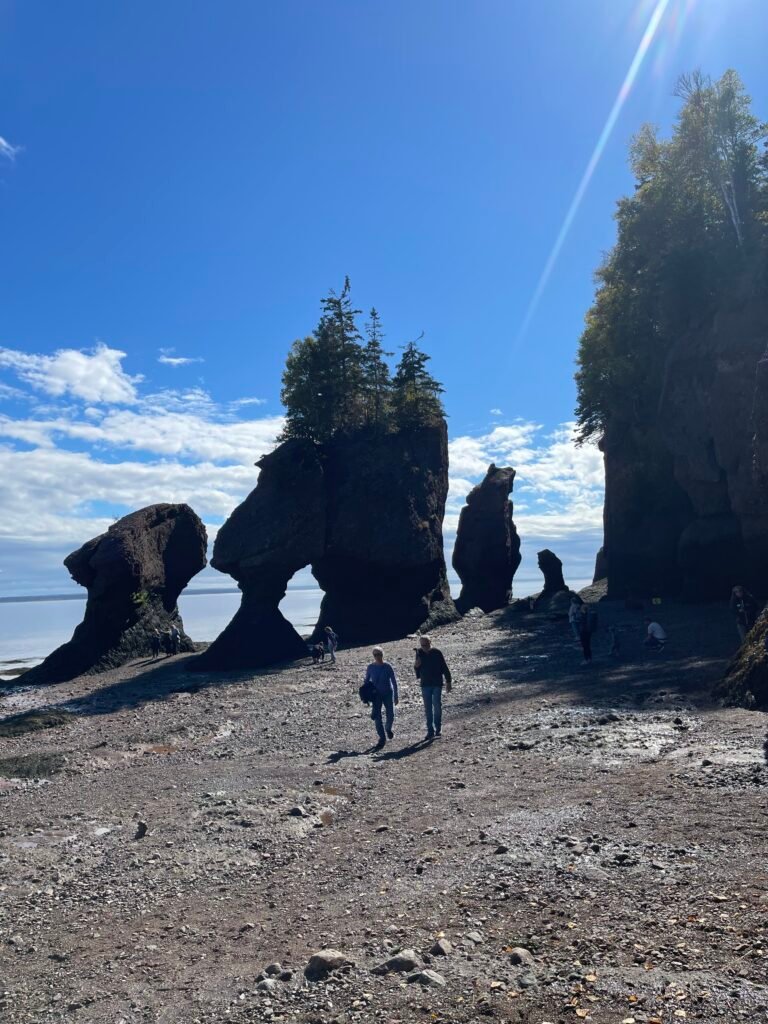
Walking on the ocean floor
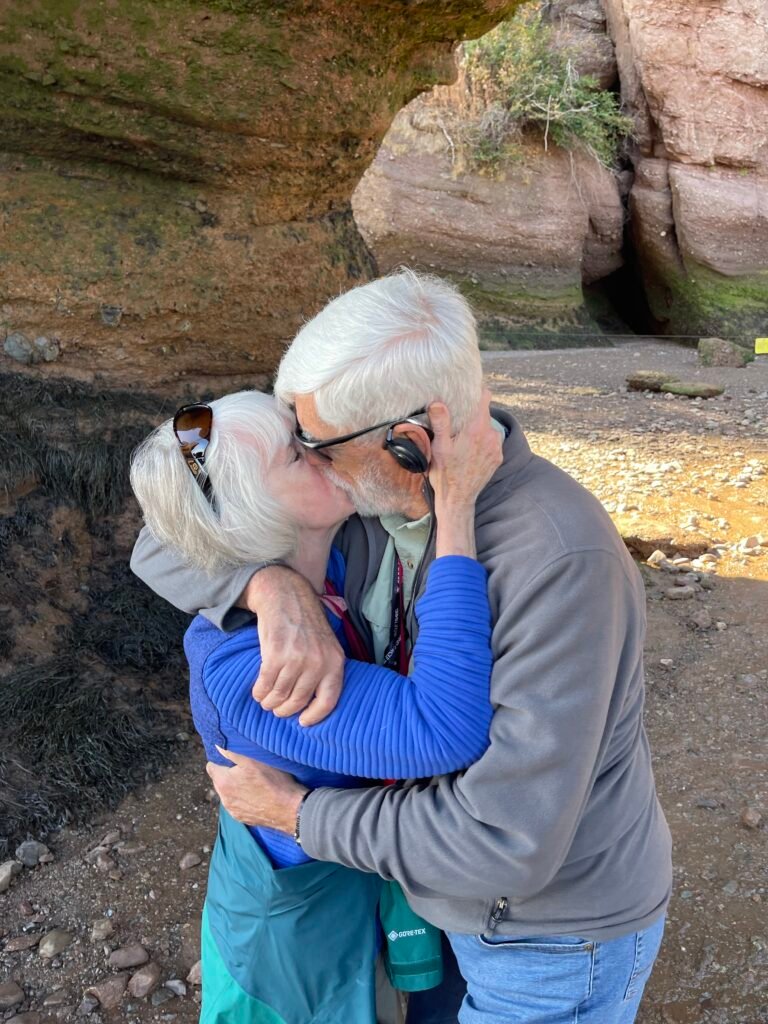
Under the arched Rick formation
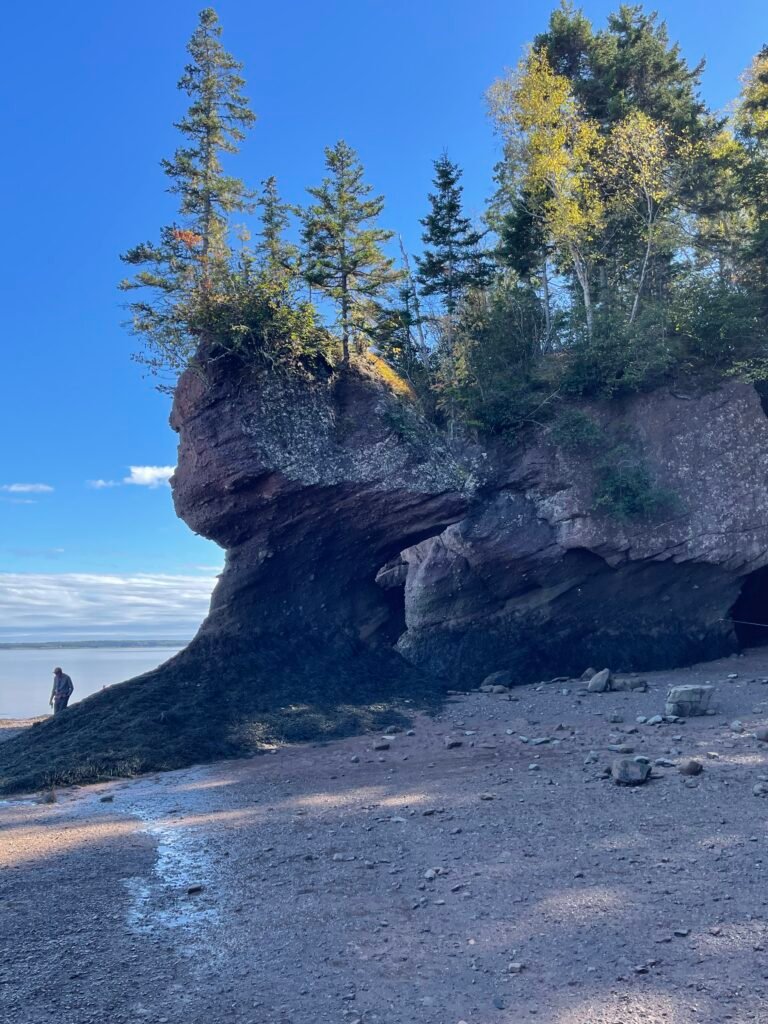
Seeing someone standing there, you can appreciate the amount of water that comes in during high tide as it goes up to the tree line.
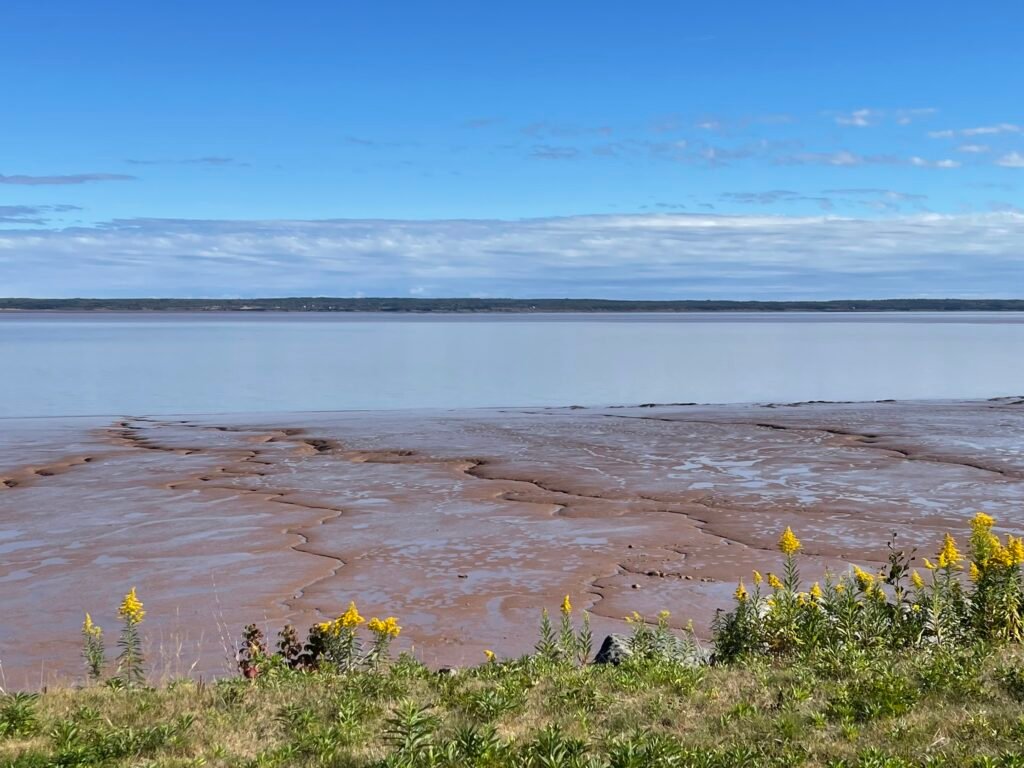
The mud flats when the tide recedes.
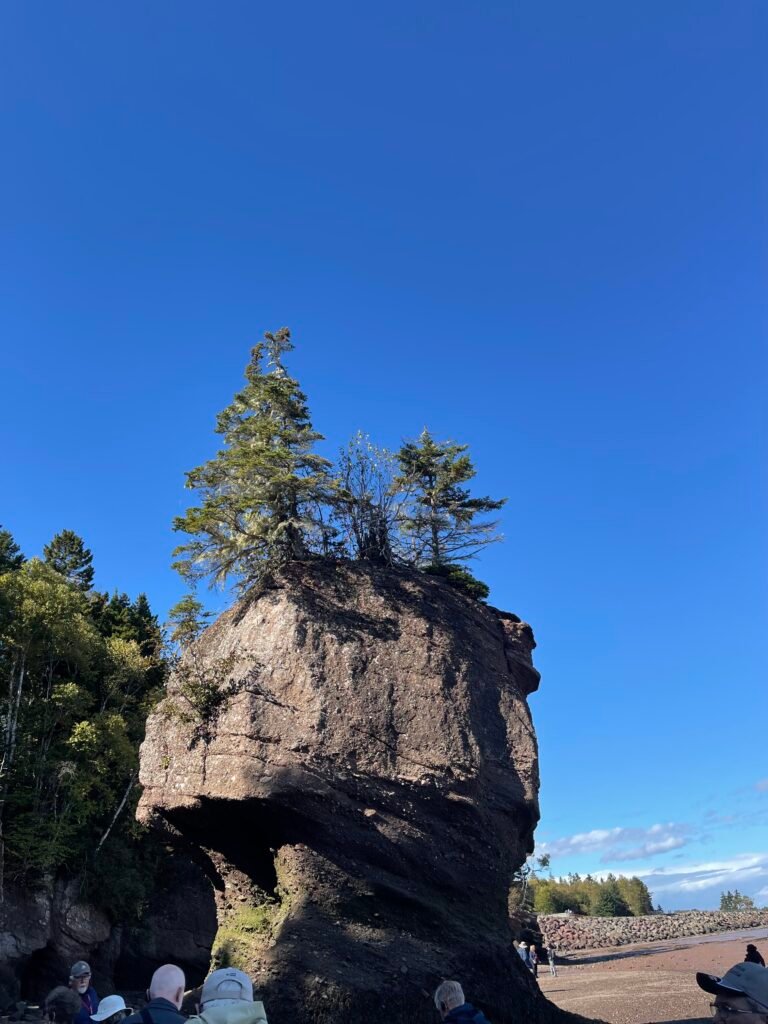
This rock formation is called ‘the flower pot’.
